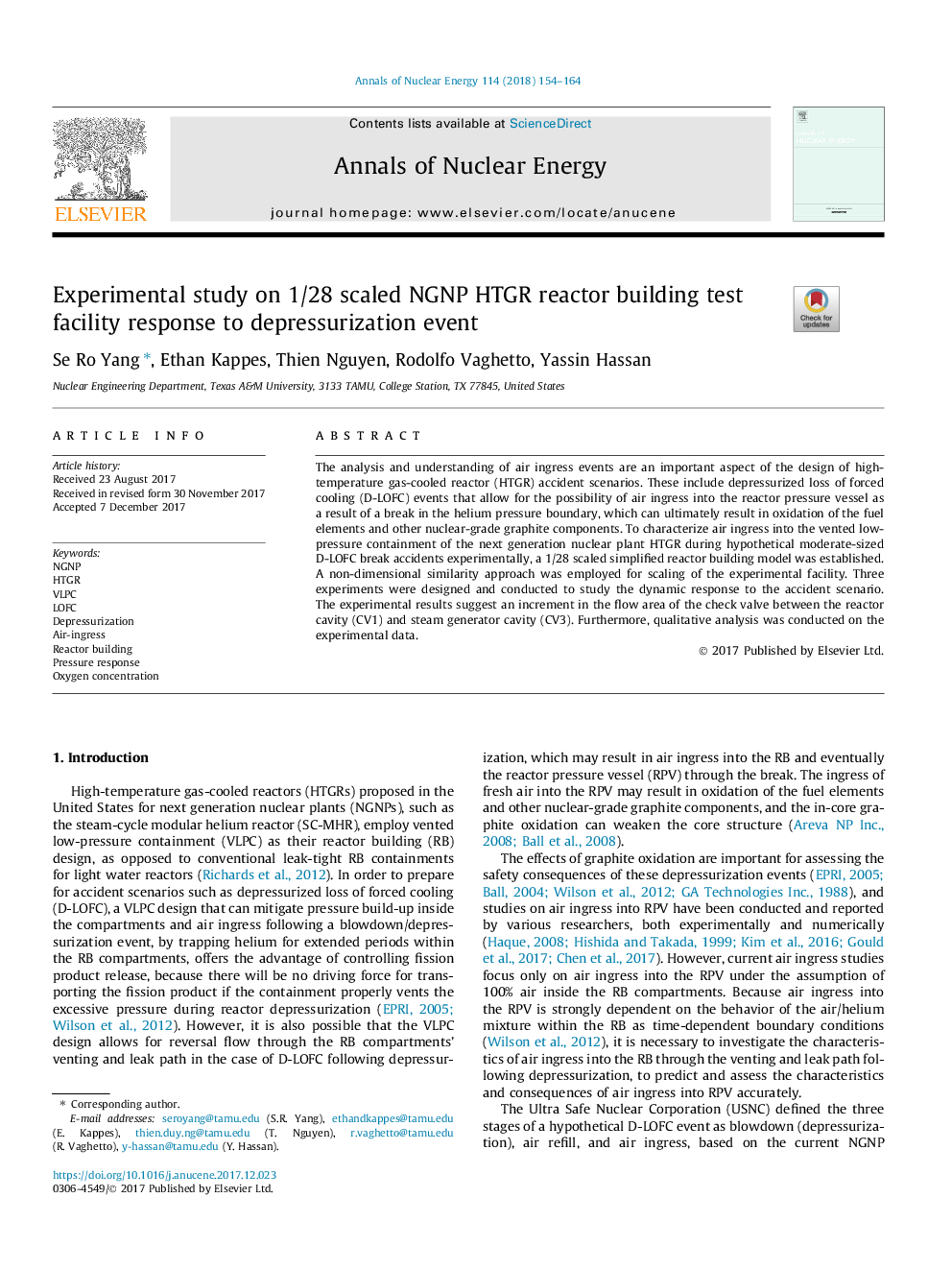| Article ID | Journal | Published Year | Pages | File Type |
|---|---|---|---|---|
| 8067140 | Annals of Nuclear Energy | 2018 | 11 Pages |
Abstract
The analysis and understanding of air ingress events are an important aspect of the design of high-temperature gas-cooled reactor (HTGR) accident scenarios. These include depressurized loss of forced cooling (D-LOFC) events that allow for the possibility of air ingress into the reactor pressure vessel as a result of a break in the helium pressure boundary, which can ultimately result in oxidation of the fuel elements and other nuclear-grade graphite components. To characterize air ingress into the vented low-pressure containment of the next generation nuclear plant HTGR during hypothetical moderate-sized D-LOFC break accidents experimentally, a 1/28 scaled simplified reactor building model was established. A non-dimensional similarity approach was employed for scaling of the experimental facility. Three experiments were designed and conducted to study the dynamic response to the accident scenario. The experimental results suggest an increment in the flow area of the check valve between the reactor cavity (CV1) and steam generator cavity (CV3). Furthermore, qualitative analysis was conducted on the experimental data.
Related Topics
Physical Sciences and Engineering
Energy
Energy Engineering and Power Technology
Authors
Se Ro Yang, Ethan Kappes, Thien Nguyen, Rodolfo Vaghetto, Yassin Hassan,
